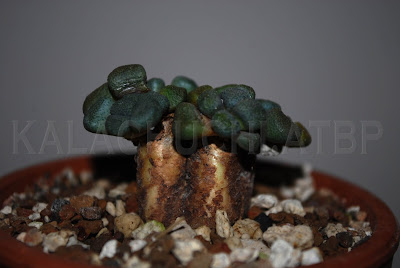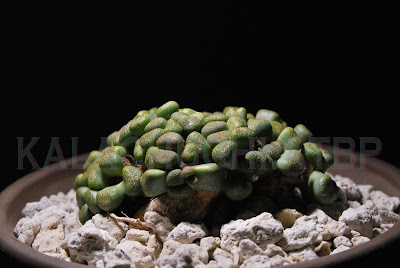These are fantastically easy to kill. If they are not otherwise dead in the pot, they spend their time getting there. These are the very definition of delicate succulents. In other dimensions, there are actual humans able to make these thrive but in this particular dimension, that has not happened.
To keep them alive, they have to be in fast-draining yet somewhat water-retentive substrate. In my pots, this means 2 parts pumice, 1 part turface and 1 part cactus soil. The cactus soil is used because normal potting soil has too much peat and I just can't get the hang of apportioning it in succulent pots. Thus far, this is the formula that have allowed these three specimens to survive the winter in the basement at an average temperature of 10C, under T5HO lights for 14 hours. Supposedly they can survive sub-zero temperatures but I have never dared.
When the plant is stressed, the succulent leaves will wrinkle. If they are getting too much light, they will turn red. If they are getting too little light, they will turn yellow and die, with no replacements. I have found mealy bugs in one of these three--treatment is simple. Just spray with a diluted solution of water and rubbing alcohol once a day for three to four days. Then again the following week.
Lithops
I gave up researching these plants years ago. In the end, I just stopped experimenting with various substrates recommended by a billion different people who swear by their mix in bazillion different languages. This pot is now three years old. Underneath the top-dressing is a substrate of 3 parts pumice and 1 part cactus soil. They are watered once in August and once in September. If I am daring, they get a spritz or two in the winter. They aren't dead so that is fine.
Trichodiadema bulbosum
 |
| This one has swollen peanut-sized caudex. In a few years, it will hopefully be more presentable. For the moment, it is recovering from the transition for Florida to the Northeast. |
Conophytum obcordellum v. obcordellum










No comments:
Post a Comment